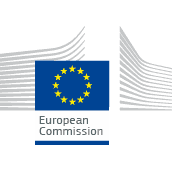
Photonics KET 2016
Date de clôture : 12 avr. 2016
APPEL À PROJET CLÔTURÉ
APPEL À PROJET CLÔTURÉ
Clusters
Entrepreneuriat et PME
Innovation
Efficacité énergétique
Environnement
Soins de santé
Sport
Tourisme
Conception
Horizon Europe
Recherche
Topic Description
Specific Challenge:Europe's photonics industry is facing fierce global market competition and has to cope with a very high speed of technological developments in the field. Further major S&T progress and research and innovation investments are required for sustaining Europe's industrial competitiveness and leadership in photonic market sectors where Europe is strong (e.g. in laser-based manufacturing, medical photonics, sensing, lighting) and to exploit new emerging market opportunities.
Moreover, Europe is experiencing the existence of many fragmented and rather uncoordinated developments between many different national and regional players. Europe suffers also from a slow innovation process for turning many good R&D results into innovative products (‘Valley of Death’). This requires a joined-up approach, covering missing links in the value chain, such as assembly and packaging of photonics components. Finally, Europe needs to better exploit the large enabling potential of photonics in many industrial sectors and in solutions addressing major societal challenges such as health and well-being, energy efficiency or safety. Europe also needs to better exploit the innovation leverage potential of the innovation clusters and national platforms. The new trend in society of makerlabs and the efforts to create more interest in STEM (Science, Technology, Engineering and Mathematics) need to be exploited to generate an increased awareness of and improved skills in photonics.
In order to capitalise on the opportunities coming from advances in Photonics for laser-based production, a topic addressing these is proposed in collaboration[[The Photonics PPP contributes 10M€ funding to this topic in the FoF Work Programme.]] with Factories of the Future topic FOF-13-2016 - Photonics Laser-based production.
Scope:a. Research and Innovation Actions
Application driven core photonic technology developments for a new generation of photonic devices (including components, modules and sub-systems): Actions should demonstrate strong industrial commitment, be driven by user needs and concrete business cases supported by strong exploitation strategies, and cover the value/supply chain as appropriate. Actions should address manufacturability and validation of results for the target applications and should include standardisation activities as appropriate. Actions may also include the related materials. Focus is on one of the following themes:
The Commission considers that proposals requesting a contribution from the EU of between EUR 2 and 4 million would allow this area to be addressed appropriately. Nonetheless, this does not preclude submission and selection of proposals requesting other amounts. Minimum one action per theme will be selected.
b. Innovation Actions
Focus is on one of the following themes:
The Commission considers that proposals requesting a contribution from the EU between EUR 2 and 4 million (for theme b.i), and between EUR 6 and 14 million (for theme b.ii) would allow these themes to be addressed appropriately. Nonetheless, this does not preclude submission and selection of proposals requesting other amounts. Minimum one action per theme will be selected.
c. Coordination and support actions
The Commission considers that proposals requesting a contribution from the EU of up to EUR 1.5 million would allow these themes to be addressed appropriately. Nonetheless, this does not preclude submission and selection of proposals requesting other amounts. Minimum one action per theme will be selected.
Expected Impact:Proposals should describe how the proposed work will contribute to the listed corresponding expected impacts and provide metrics, the baseline and concrete targets.
a. Research and Innovation Actions
i. Biophotonics: advancing imaging for in-depth disease diagnosis
- Substantially improved in-depth diagnosis and more effective treatment of age and life-style related diseases;
- Secured and reinforced industrial leadership in the biophotonics related market for Analysis and Diagnostic Imaging Systems.
ii.. Breakthrough in miniaturization of SSL light engines and systems
- Improved cost/performance ratio and higher energy efficiency of miniaturized SSL light engines and systems;
- Innovative lighting, expanding application fields and markets for lighting solutions and maintained European industrial leadership in the global lighting market.
iii. Pervasive high-specificity and high-sensitivity sensing for a safer environment
- Better and pervasive environmental sensing and a safer environment;
- Secured and reinforced industrial leadership in sensing applications for the environment.
b. Innovation Actions
i. Microdisplay-based immersive, augmented and virtual reality visualisation systems
- Major benefits for the users and end-markets from immersive, augmented and virtual reality visualisation systems;
- Increased market presence in augmented and virtual reality visualisation systems.
ii. Pilot line for Assembly and Packaging
- Industrial assembly and packaging of integrated photonic components in Europe and providing cost effective assembly and packaging solutions for SMEs;
- Strengthening Europe's position in the manufacture of integrated photonic components and covering the full value chain in Europe.
c. Coordination and support actions
i. Coordination of regional photonics strategies
- Improved coordination of strategies and resources within Europe and effective reinforcement of the European photonics sector.
ii. Photonics enabled MakerLabs
- A larger and better skilled photonics workforce and improved innovation capacity in photonics.
Lien officiel : Disponible pour les utilisateurs enregistrés




S'il vous plaît Se connecter pour voir cette section